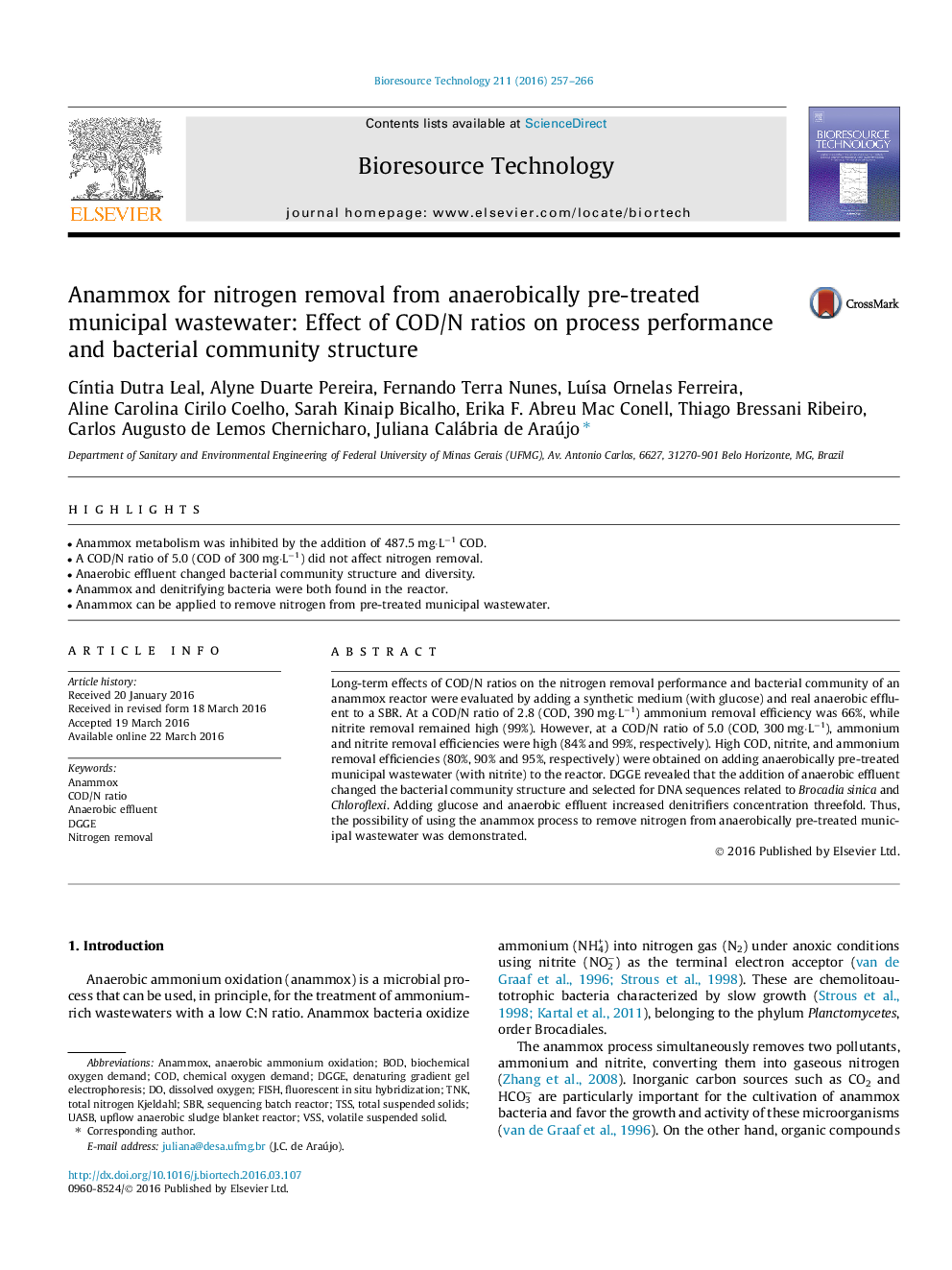| Article ID | Journal | Published Year | Pages | File Type |
|---|---|---|---|---|
| 7071563 | Bioresource Technology | 2016 | 10 Pages |
Abstract
Long-term effects of COD/N ratios on the nitrogen removal performance and bacterial community of an anammox reactor were evaluated by adding a synthetic medium (with glucose) and real anaerobic effluent to a SBR. At a COD/N ratio of 2.8 (COD, 390 mg·Lâ1) ammonium removal efficiency was 66%, while nitrite removal remained high (99%). However, at a COD/N ratio of 5.0 (COD, 300 mg·Lâ1), ammonium and nitrite removal efficiencies were high (84% and 99%, respectively). High COD, nitrite, and ammonium removal efficiencies (80%, 90% and 95%, respectively) were obtained on adding anaerobically pre-treated municipal wastewater (with nitrite) to the reactor. DGGE revealed that the addition of anaerobic effluent changed the bacterial community structure and selected for DNA sequences related to Brocadia sinica and Chloroflexi. Adding glucose and anaerobic effluent increased denitrifiers concentration threefold. Thus, the possibility of using the anammox process to remove nitrogen from anaerobically pre-treated municipal wastewater was demonstrated.
Keywords
TSSTNKSBRDGGEUASBBODAnammoxCOD/N ratioVSsDenaturing gradient gel electrophoresisAnaerobic ammonium oxidationdissolved oxygenanaerobic effluentbiochemical oxygen demandchemical oxygen demandNitrogen removalUpflow anaerobic sludge blanket reactorSequencing batch reactorvolatile suspended solidfluorescent in situ hybridizationFishtotal suspended solidsCod
Related Topics
Physical Sciences and Engineering
Chemical Engineering
Process Chemistry and Technology
Authors
CÃntia Dutra Leal, Alyne Duarte Pereira, Fernando Terra Nunes, LuÃsa Ornelas Ferreira, Aline Carolina Cirilo Coelho, Sarah Kinaip Bicalho, Erika F. Abreu Mac Conell, Thiago Bressani Ribeiro, Carlos Augusto de Lemos Chernicharo,
